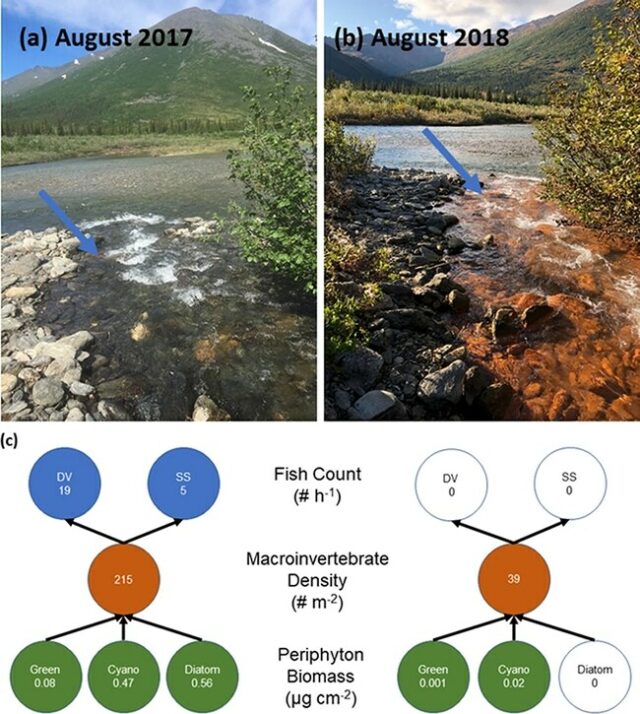
In early May 2024, a remarkable series of solar flares lit up the night skies with stunning auroras, captivating astronomy enthusiasts and the general public. However, the real spectacle occurred less than a week later when one of the most powerful solar flares in recent history erupted from the same sunspot region, AR3664. This flare, classified as an X8.7, dwarfed the earlier X1-X2.25 flares that had created the beautiful auroras. Solar flares are categorized by intensity on a scale where X denotes the most powerful class, with the number indicating the flare’s strength relative to the base level of that class. Thus, an X8.7 flare is significantly more intense than an X1 flare. Despite its immense power, the X8.7 flare did not produce visible auroras because AR3664 had moved to the edge of the Sun’s visible disc, reducing its impact on Earth.

The May 14 flare, currently ranked among the top 20 strongest flares recorded since the advent of space-based solar observations in the 1970s, has intrigued solar physicists. Its significance lies not only in its sheer power but also in its timing within the solar cycle, which peaks roughly every 11 years. The previous most powerful flare was initially classified as X8.2 in 2017 but was later reassessed to X11.88, suggesting that the May 14 flare’s strength might also be revised upwards. The most intense flare on record, an X45, occurred in 2003. Solar flares, the largest explosions in our solar system, result from the Sun’s magnetic fields twisting and reconnecting, releasing vast amounts of energy that can disrupt Earth’s communication systems, power grids, and space missions. With the solar maximum expected in July 2025, scientists anticipate more flares and auroras, providing further opportunities to study and understand solar weather’s complex dynamics.


The Magnolia Eco-Cabin, designed by architect Michael Quirk, is a testament to innovative sustainable building practices. Nestled in the woods of Nederland, Colorado, this 11-square-meter micro-cabin showcases how efficiency and eco-consciousness can be harmoniously blended. The cabin is constructed using locally sourced and recycled materials, reflecting Quirk’s commitment to sustainability. Its off-grid functionality is powered by solar energy, Continue reading “This Off-Grid Eco-Cabin in the Woods is an Exploration in Sustainable Building Practices” »

The Sprite Cabin, situated in the picturesque Fragrant Lake of Huanggang City, China, is a remarkable example of sustainable architecture that seamlessly blends with its natural surroundings. Designed by Wiki World, this innovative cabin is nestled next to the Inner Lake Peninsula amidst a serene bamboo forest. The unique crystal-like structure features three peaked volumes, giving it a cozy yet modern appearance. Mu Wei, the Founder of Wiki World, explains that the inspiration for the Sprite Cabin comes from the distinctive geometries of crystals, which are rare in nature but have a special, Continue reading “This Unique Crystal-Shaped Cabin is as Easy to Assemble as a ‘Game of LEGO’” »

In Regina, Saskatchewan, Canada’s first free grocery store, the Food Hub, is set to open at 1881 Broad St. This innovative project is spearheaded by the Regina Food Bank, which aims to transform the traditional food bank model into a more dignified and efficient system. Unlike conventional food assistance programs that distribute pre-packaged boxes, the Food Hub will mimic a regular grocery store, complete with a produce section, Continue reading “Canada’s First Grocery Store Where Food is FREE Opens in Saskatchewan” »

Alaska is renowned for its pristine wilderness, characterized by majestic mountains, dense forests, and an extensive network of rivers. However, this natural beauty has recently been marred by an alarming phenomenon: the transformation of some rivers into a murky, rusty orange hue. This drastic change was first observed by scientist Jon O’Donnell during a visit to a remote river in 2018, a stark contrast to the clear waters he had seen the previous year. This anomaly prompted an in-depth investigation, culminating in findings published in Nature Communications: Earth and Environment. The study reveals that climate change is the primary driver behind this unsettling transformation. As permafrost warms, it releases metals and acids into the rivers, contaminating the water. Satellite imagery has shown that these changes began as early as 2008, indicating a long-term trend visible even from space. O’Donnell and his team, including researchers from the National Park Service, U.S. Geological Survey, and University of California, Davis, found more and more orange rivers during their aerial surveys, highlighting the widespread nature of this issue.

Water testing revealed alarming levels of iron, zinc, nickel, copper, and cadmium, with pH levels dropping to as low as 2.3 from the normal 8. PhD student Taylor Evinger noted that the dominant metal causing the color change is iron, which oxidizes and gives the tributaries their rust color. These tributaries feed into larger rivers, creating a stark contrast between the orange and the still-clear waters. O’Donnell warned of the broader implications of this phenomenon. As the climate continues to warm, more permafrost is expected to thaw, potentially increasing the number of orange, polluted streams. This poses significant threats to water quality, drinking water supplies, and wildlife, particularly salmon populations in Alaska. Additionally, melting permafrost could release other ancient materials, such as plant DNA and frozen viruses, into the environment. The situation underscores the urgency for scientists to understand and mitigate the impacts of climate change on ecosystems and human life.







J.R.R. Tolkien’s The Lord of the Rings series is set in the expansive world of Middle-earth, where fantastical creatures such as elves, ogres, and dragons roam free, and heroes come in all shapes and sizes. Naturally, a high fantasy story with such all-encompassing world-building deserves an equally comprehensive LEGO set to do it justice, and the beloved toy company recently released a brand new set doing just that. The set features the location of Barad-dûr, or the Dark Tower, which is Sauron’s fortress in Mordor. The set, which comes with a whopping 5,471 pieces, measures 83 centimeters (or about 2.7 feet) tall. The tower is topped with the famous Eye of Sauron, which is illuminated by a light brick, providing it with a blazing effect. The set also comes with ten detailed character mini-figures, including Sauron himself, as well as protagonists Frodo and Sam.

The inside of the tower features several elaborate rooms, including a dining hall, dungeon, and forge, all visible by peering into the back of the looming LEGO brick building. On the front of the tower, the main gates can be opened and shut using a tiny button, and the all-seeing Eye of Sauron can be turned in any direction. This attention to detail and interactive features make the set not only a visual spectacle but also a hands-on experience for fans and builders. Whether recreating iconic scenes from the series or imagining new adventures in Mordor, this LEGO set brings the dark allure and epic scale of Tolkien’s world into the homes of enthusiasts and collectors alike.





Los Angeles is famous for its broad, congested highways full of cars inching bumper to bumper through traffic. These legendary many-lane highways teeming with vehicles are annoying to commuters, but they’re deadly to local wildlife and can end up as roadkill. Highway 101 runs through Los Angeles County, dividing the habitats of the Santa Monica Mountains and the Simi Hills in the Santa Susana range. This has particularly created extra problems for mountain Continue reading “World’s Largest Wildlife Crossing Allows Animals to Safely Pass over Highway in California” »

Nestled in the city of Munich, Germany is an innovative architectural structure designed to transform communal living. Known as the Clusterwohnen Wabenhaus or Honeycomb House, this project by Peter Haimerl Architektur epitomizes communal harmony and efficiency through its unique hexagonal-framed apartment layout. Unlike traditional homes, each apartment in the Honeycomb House features sloping ceilings and highly usable floor areas, optimizing space for storage along the interior walls. The ingenious design incorporates space-saving furniture such as shelves, sofas, floating beds, dining tables, and wardrobes directly into the sloping walls. Additional features include European wall kitchens, spacious outdoor balconies, and hidden bathrooms, all enhancing the living experience. The honeycomb shape not only maximizes spatial orientation but also ensures optimal natural light diffusion, with the primary spatial axis aligned longitudinally to the facade, allowing daylight to flow freely into the apartments.

The Honeycomb House redefines communal living by merging the boundaries between individual apartments, fostering a sense of community while maintaining privacy. Its central hub acts as the heart of the living space, facilitating shared experiences and communal harmony. A central staircase connects all the apartments and common areas, encouraging interaction among residents. Economically, the design reduces reliance on traditional walls, favoring sloping planes that provide more value without compromising quality. The prefabricated modules streamline the construction process, reducing waste and enhancing economic viability. Sustainable features such as rooftop gardens and communal kitchens further promote an environmentally friendly lifestyle. The Honeycomb House not only exemplifies beautiful communal living but also offers significant economic and sustainable benefits, making it a model for future residential projects.










Sand batteries could revolutionize the renewable energy landscape by providing a sustainable and efficient method of energy storage. This innovative technology harnesses the natural properties of beach sand to store and release energy derived from intermittent sources like solar and wind power. Sand’s ability to retain heat at high temperatures makes it an ideal medium for energy storage, offering a stable and reliable supply of energy that can be tapped into when renewable generation is low. Continue reading “Sand Batteries Could Be The Next Frontier In Renewable Energy–And it’s Already Heating Homes in Finland” »


















































